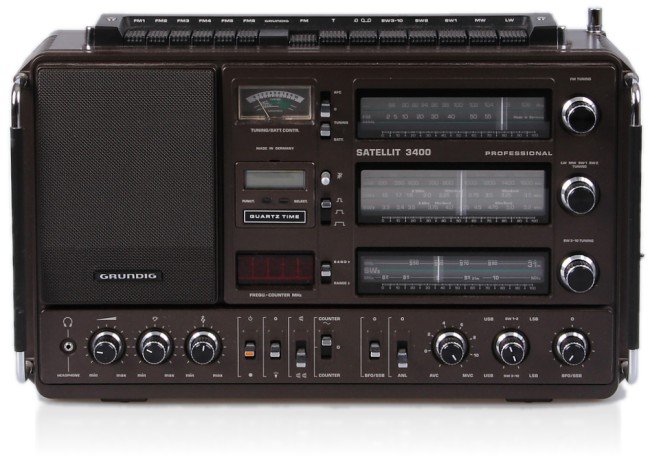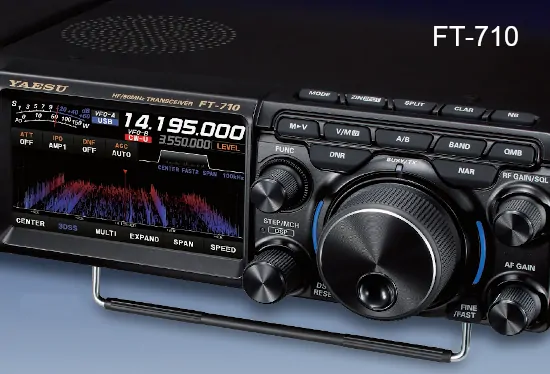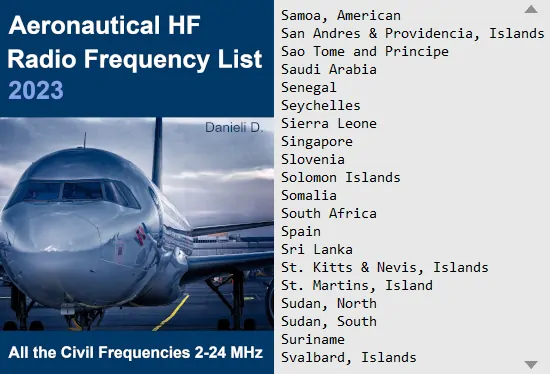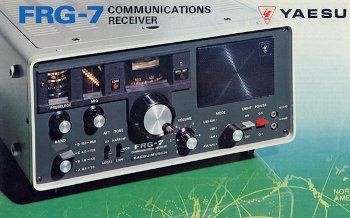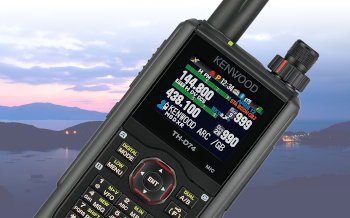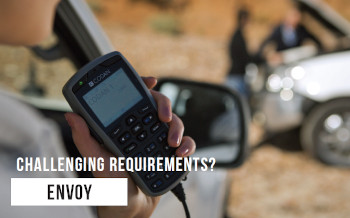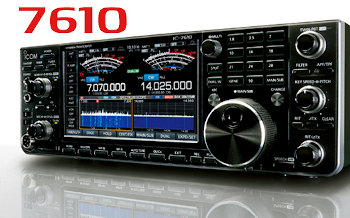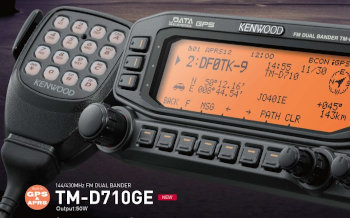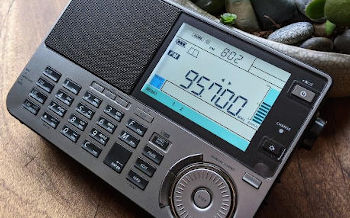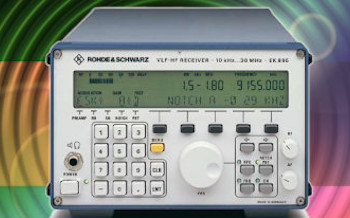
PC controlled direct sampling SDR receiver. Receiving frequency range 9 KHz to 108 MHz. Supports spectrum acquisition up to 24 MHz bandwidth. 8 slot for optional preselection filters. Ideated in Italy, year of introduction 2020.
Reference market : amateur-radio
FDM-S3 specifications
| General |
| Frequency coverage | |
|---|---|
| 0.0090 ~ 108.0000 MHz [1] | |
| Mode | |
| CW / LSB / USB / AM / FM / WFM / DRM | |
| Tuning step | |
| 1 Hz min |
| Receiver |
| Sensitivity | |
|---|---|
| CW | -122 dBm (HF/50 MHz, 10dB S+N/N) |
| WFM | 0.7 uV (91.1 MHz, 20dB S/N, pre ON) |
| MDS (Minimum Detectable Signal) | |
| -132 dBm (14 MHz, 500 Hz BW, noise reduction off) -138 dBm (14 MHz, 500 Hz BW, noise reduction on) -130 dBm (50 MHz, 500 Hz BW, noise reduction off) -136 dBm (50 MHz, 500 Hz BW, noise reduction on) -129 dBm (91 MHz, 500 Hz BW, pre OFF) -138 dBm (91 MHz, 500 Hz BW, pre ON) |
|
| Selectivity | |
| user-defined | |
| ADC (Analog to Digital Conversion) | |
| Sample rate | 98.304 / 122.88 Msps |
| Resolution | 16 Bit |
| DDC bandwidth | 192 / 384 / 1536 / 3072 / 6144 / 12288 / 24576 KHz |
| RF preamplifier | |
| 10 dB (54-108 MHz) | |
| RF attenuator | |
| 6 / 12 / 18 dB | |
| Blocking | |
| 115 dB (2 KHz spaced signals, 10 MHz) | |
| IP3 (3rd order intercept point) | |
| +30 dBm (14 MHz) +26 dBm (91 MHz) |
|
| RF clipping input level | |
| -5 dBm (14 MHz, att OFF) -4 dBm (91 MHz, att OFF, pre OFF) -23 dBm (91 MHz, att OFF, pre ON) |
|
| Features |
| Memory | |
|---|---|
| Unlimited memory channels | |
| Antenna | |
| 2 x SMA 50Ω (HF/50) SMA 50Ω (VHF) |
|
| Power supply | |
| 8-16 VDC | |
| Power consumption | |
| 700 mA (12V, with TCXO) 1100 mA (12V, with OCXO) |
|
| Connections | |
| USB3.0 DB9 (external accessories) SMA (10 MHz reference input) SMA (10 MHz reference output) SMA (GNSS antenna) |
| Mechanical and environmental data |
| Operating temperature | |
|---|---|
| from -10°C to +40°C | |
| Dimensions | |
| 230 (W) x 60 (H) x 155 (D) mm | |
| Weight | |
| 2.15 kg |
- From 108 MHz to UHF extended range with bypassable front-end and ADC undersampling mode for experimental use.
The Elad FDM-S3 receiver is the third SDR device of the FDM-Sx series. It stands out in particular for the considerable extension of the spectrum range that can be acquired, the user can now choose a bandwidth from a minimum of 192 kHz up to 12 or 24 MHz. Thanks to these last two additional bands it is possible to analyze a large part of the HF with undeniable potential in recording / processing all the radio signals that are placed there. The nominal frequency range goes from 9 kHz to 108 MHz without interruption and with preamplifier plus internal filter for the FM band.
Two variants of the FDM-S3 are available which differ in the characteristics of the master oscillator: The version with TCXO, i.e. with temperature compensated oscillator, offers good frequency stability while minimizing energy consumption. The version with OCXO, that is with thermally controlled oscillator to operate at constant temperature, guarantees a higher degree of stability but on the other hand requires a higher energy consumption.
The radio has in its core a 16-bit LTC2208 type analog-to-digital converter (ADC), the device operates at a variable sampling frequency of 122.88 MHz or 98.304 MHz. This technique allows you to choose the best sampling frequency in operation of the tuning band. Regarding the tunable frequency range, even if the maximum declared value is 108 MHz, the user is left with the possibility to go further for experimental purposes. The following table summarizes some information on the behavior of the FDM-S3 according to the chosen RF input and the tuned frequency. It should be added that in the intentions of the manufacturer an optional Downconverter will also be made available to extend coverage in a defined way.
| Input HF-1 / HF-2 | |
|---|---|
| Band | 0.009-54 MHz |
| Sampling | 122.88 MHz |
| Circuits | Low-pass filter + preselectors |
| Input VHF | |
| Band | 54-68.88 MHz |
| Sampling | 98.304 MHz |
| Circuits | Bypass + preamplifier |
| Input VHF | |
| Band | 68.88-108 MHz |
| Sampling | 122.88MHz |
| Circuits | Band-pass FM filter + preamplifier |
| Input VHF | |
| Band | 108-147 MHz |
| Sampling | 98.304 MHz |
| Circuits | Bypass + preamplifier |
| Input VHF | |
| Band | 147-500 MHz |
| Sampling | 122.88 MHz |
| Circuits | Bypass + preamplifier |
The FDM-S3 has a Reference Clock Manager Module (RCMM) that allows you to choose between the internal TCXO / OCXO or between two reference clocks: A GNSS-DO (Global navigation satellite system Disciplined Oscillator) that supports the main satellite constellations (GPS, GLONASS , GALILEO) or an external signal supplied at the standard value of 10 MHz. If used without reference clock (RCMM not locked) the FDM-S3 has a frequency calibration less than ±0.1ppm. If used with a reference clock (RCMM locked), characteristics depend on the oscillator version: with TCXO (Temperature Compensated Crystal Oscillator) frequency stability is ±0.1ppm, with OCXO (Oven Controlled Crystal Oscillator) frequency stability is ±0.01ppm.
An integrated USB hub allows to have only one USB 3.0 connector that provides three USB connections to the ELAD FDM-S3 sampler (used by the FDM-SW2 software), the USB COM Port of the Reference Clock Manager Module (RCMM), the USB COM Port of the internal Gnss (global navigation satellite system) module which can be connected to the u-center software from u-blox (or equivalent software) with NMEA protocol.
The FDM-S3 has two antenna biases, one for the HF-2 input and one for the VHF input. The supplied voltage is 5V (max 150mA). Two LEDs on the front panel allow to check the biases status. Antennas biases can be managed through the Tuning Step tab of the Setup window of the FDM-SW2 software. This is the block diagram of the receiver's RF front-end.

ELAD FDM-S3 front-end block diagram
The FDM-S3 has eight preset filter slots. These filters are optional, therefore not strictly necessary for the operation of the receiver, as only the bypass circuit is essential, which is included as shown in the following image. The optional filters, connected to the HF-1 and HF-2 inputs, when installed improve rejection to strong out-of-band signals to the advantage of dynamic-range within the 9 kHz to 54 MHz spectrum.

ELAD FDM-S3 slots for optional filters
To change the preselector filters configuration remove the top cover of the FDM-S3 and the preselector filters shield as shown in the picture above. Insert the desired filters, take note of filters positions and then replace the shield and the cover. The following table presents the filters available on ELAD website.
| Filter Code / Description | |
|---|---|
| FBPY [1] | Bypass board. |
| FLP05M-1 | 500 kHz Low-Pass Filter. |
| FHP05M-1 | 500 kHz High-Pass Filter. |
| FHP1M7-1 | 1700 kHz High-Pass Filter. |
| FBP160-1 | 160 meters Band-Pass filter. |
| FBP80-1 | 80 meters Band-Pass filter. |
| FBP40-1 | 40 meters Band-Pass filter. |
| FBP30-1 | 30 meters Band-Pass filter. |
| FBP20-1 | 20 meters Band-Pass filter. |
| FBP17-1 | 17 meters Band-Pass filter. |
| FBP15-1 | 15 meters Band-Pass filter. |
| FBP12-1 | 12 meters Band-Pass filter. |
| FBP1321 | 13-21 MHz Band-Pass filter. |
| FBP2135 | 21-35 MHz Band-Pass filter. |
| FPCB-B3 [2] | Printed circuit board of B3 type filter. |
| FPCB-H5 [2] | Printed circuit board of H5 type filter. |
- The bypass board is supplied with the FDM-S3.
- Only printed circuit board for self-built filters, the schematics are available online.

ELAD FDM-S3 rear panel and connections
| Reference / Description | |
|---|---|
| 1 | Reference clock inputs (2 x SMA) GNSS ANT is the input where connect a Gnss antenna. A voltage of 3.3 VDC is supplied on this connector, maximum deliverable current 50 mA. REF IN is the input for a 10 MHz reference signal. Note, reference clock activation is automatic, just connect the Gnss antenna or provide a 10MHz signal. If both inputs are used priority is given to the 10 MHz signal REF IN. |
| 2 | RF inputs for antennas (3 x SMA) The receiver has three antenna connectors. HF-1 for HF bands and the 50 MHz band, HF-2 (with bias 1 feature) for HF bands and the 50 MHz band, VHF (with bias 2 feature) for frequencies over 54 MHz. |
| 3 | Clock reference output (SMA) A 10 MHz reference signal is always supplied on this output. TCXO version: square wave waveform of about 1.3 Vpp. OCXO version: sine wave waveform of about 2.8 Vpp. |
| 4 | DB9 connector for external hardware input / output |
| 5 | USB 3.0 type B connector for computer connection |
| 6 | Double DC-power connectors |
FDM-S3 requirements :
An USB 3.0 port is required to connect the FDM-S3 to a computer. Computer minimum requirements to run the FDM-SW2 software with the FDM-S3 at 24 MHz are the following: 5th/6th/7th generation Intel Core i5/i7 or equivalent processor and 8GB of RAM. Suggested configuration 8th generation or higher Intel Core i5/i7 or equivalent)processor and 16GB of RAM. To recording at 24 MHz of bandwidth a SSD with at least 250 MB/s write speed is recommended.
FDM-S3 package contents :

The Elad FDM-S3 comes shipped with these items.
The Gnss antenna is not supplied with all versions, please check ELAD websites for details
FDM-S3 price
We have collected for your convenience the Elad FDM-S3 sale price (US Dollar) and its trend over time. Useful to guarantee a cheaper purchase of this radio and to put it for sale in the second-hand market. Of course offers, accessories, warranty terms and conditions can lead to different figures.
|
|
|
|
| USD 980.00 | 2023-mar | Brand-new |
|
USD 1108.90 (949EUR) |
2021-oct | Brand-new |
| USD 960.00 | 2020-dec | Brand-new |
|
USD 1250.00 (968GBP) |
2020-dec |
Brand-new With GNSS antenna |
FDM-S3 review
Your opinion on merits, defects, experiences, with this radio set is welcome. Write your review, after a technical evaluation by our staff if found suitable will be published on this page. We thank you for your precious contribution.
